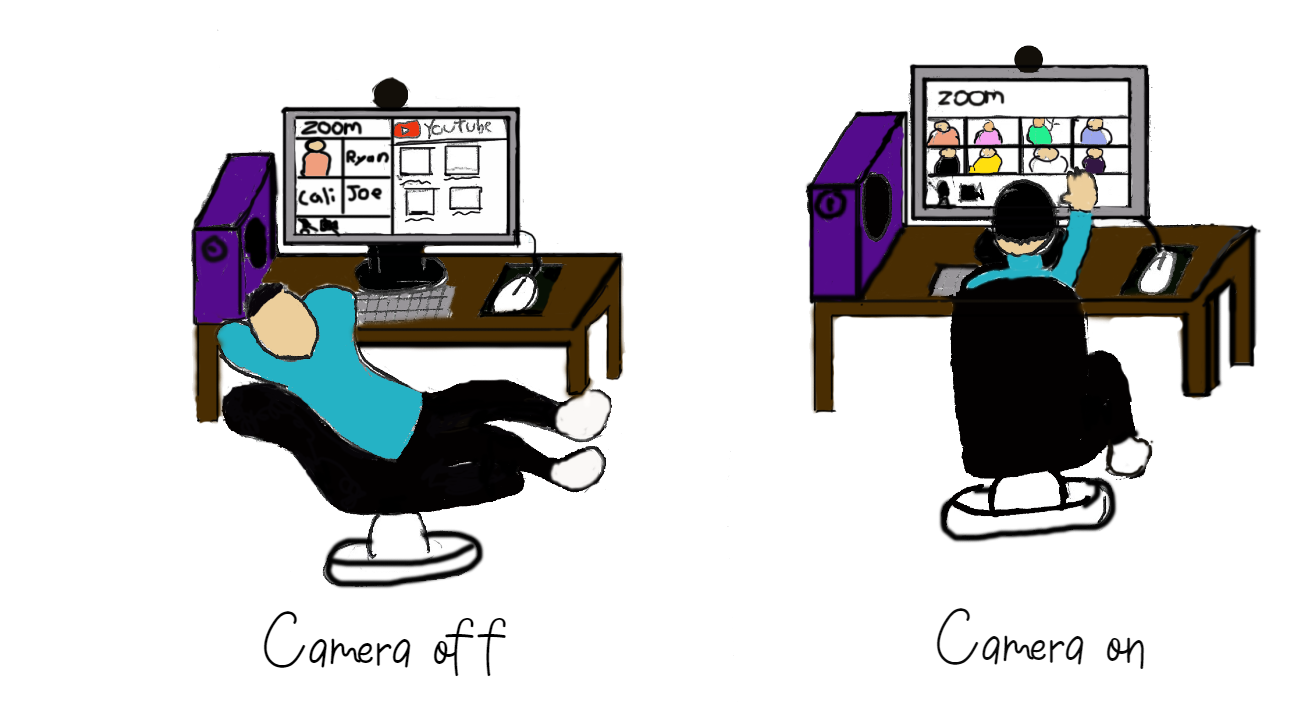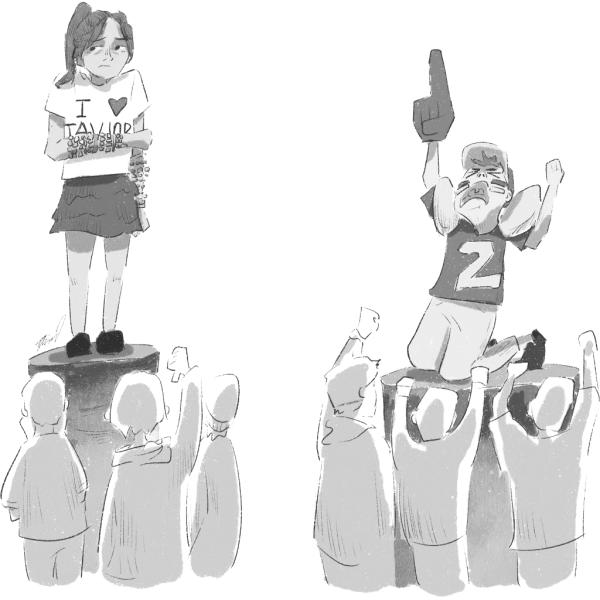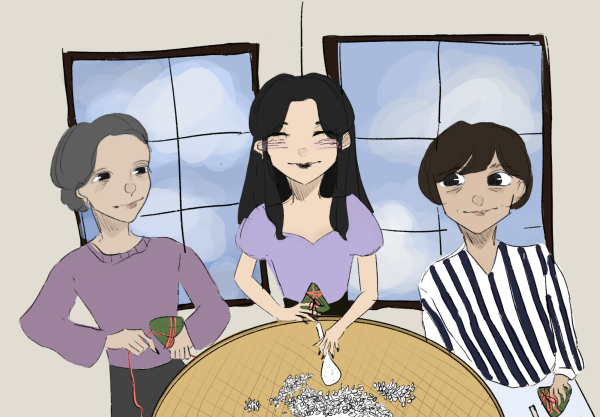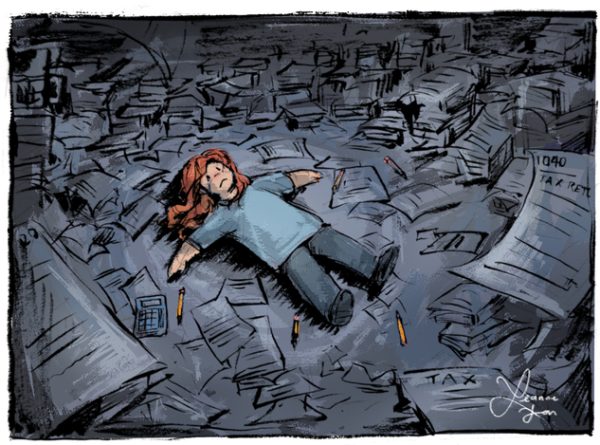Opinion: Zoom cameras help establish interpersonal connection in virtual world
December 17, 2020

Waking up five minutes before school starts, I turn on my laptop and hop into my first-period Zoom call, where I see the same few cameras on, and the rest pitch black. I gaze back at my bed, which looks extremely inviting and loving, I turn back at my screen and think, “Who’s going to stop me?”
On the first few days of school, the excitement of new classmates and classes had me interested in what the year had in store. However, as the quarantined school year has dragged on, this eagerness that my peers and I felt has melted away each day, turning into one of anxiety. A full class of 30 or more different faces with opportunities to make great friends started disappearing as the days went by, those 30 turned to 20, then to 10, and then to a mere five faces in a sea of black screens.
It feels as if our time at home has made everyone less social and more wanting to being alone.
The effects of being alone have grown within students all over the world, leading many to simply turn off their camera at every given chance, tuning themselves out from their class and, ultimately, their ability to make connections.
The fact that some teachers don’t make it mandatory to show your face on screen has made it too convenient for us students.
This is all a mistake.
Sometimes students may not like their face to be shown in front of others when given the option. It’s almost as if we’re afraid of seeing our own faces, we’re terrified of standing out from the black screened, ominous crowd, or for most, we simply want to nap.
As we shut off our screens, and with no facial expressions to see, we feel like we’re talking to nothing.
This absence of faces not only lowers our interaction with school peers but also our attentiveness in our classes and ultimately distracts us from the lesson. Just the presence of having your face visible makes it more so that you want to look like you’re paying attention, which will, in turn, make you actually pay attention.
The reason it’s been so difficult for us is that we have become accustomed to turning off our screens. We can’t have conversations with our table mates about a confusing homework assignment. We can’t have those spontaneous in-class conversations that spark serious discussions or laughter. And we can’t have the same connection to our peers that we would have experienced in the classroom.
In two of my classes, mostly everyone’s cameras are on. In my AP Psychology class, having our cameras on affects our participation grade and my Journalism 2 teacher also requires it. These are the classes where I feel the most connected. I know what face goes to what voice, whereas in other classes, where I’ve heard about 2-3 people talk, I still don’t know what half my class looks like.
This takes a toll on many students because, as a species, we are social creatures, and we strive to socialize and be with others.
Not all hope is lost though.
The simple act of turning on our cameras can encourage more than just interaction—it also creates a more enjoyable environment to participate in.
Even before quarantine, most of us had already been connecting online: texting, playing video games and watching videos.
Similar to other social platforms like Reddit, Twitch, and Instagram, nobody is forcing us to comment, text or show our faces.
If you take a look at the most popular video game streamers and content creators like xQc, Sykkuno, and shroud, almost everyone has a face cam, and the few who don’t like Corpse and Dream have been asked by fans to reveal their faces.
People not only watch streams for the game but also for the personality of the streamer. We’re able to connect with them and their emotions as we see their face. We empathize and almost feel exactly what they’re feeling. Their facial expressions and body language draw attention and enhance the viewers’ experiences. Seeing and hearing them makes us more entertained and engaged.
The idea correlates with online school. We miss seeing other people’s faces. We yearn for human interaction.
“As a species, we are very highly attuned to reading social cues,” said Dr. Catherine Steiner-Adair, a clinical psychologist and author of The Big Disconnect.
As humans, reading social cues and partaking in conversation is necessary for effective communication, and simply seeing other’s faces on a screen is a key part of that.
Even in an online environment, there is power in seeing people’s faces, hearing them speak, and ultimately forming a connection. The more faces seen on a screen, the more likely an engaging, happier, and comfortable environment will be felt among students and their peers. According to Melanie Greenberg Ph.D., she said in her article, Does Being More Social Make Us Happier, “Previous research has shown that people feel happier when interacting with others and that happy people interact more with others.”
For me, in the classes where I have my camera on, it’s a way to effectively participate in class, as other potential distractions are eliminated.
As daunting as it may seem, being one of the few brave souls to make a Zoom appearance is something that can make online school a little more tolerable. The ability to see the smiles (or frowns) of our peers and to participate in discussions, can catalyze change to the boring, asynchronous world we live in. If we all give this a shot, we could create a more connected and engaging school environment, one that is slightly less miserable.
Yes, it’s at the cost of discomfort and maybe a little embarrassment, but it’s a step we all need to take.
Since we’ve been so accustomed to hiding and being isolated, we may even forget how to interact with new students in our classes once we do get back on campus.
Who knows, maybe turning on that camera won’t be too bad.







